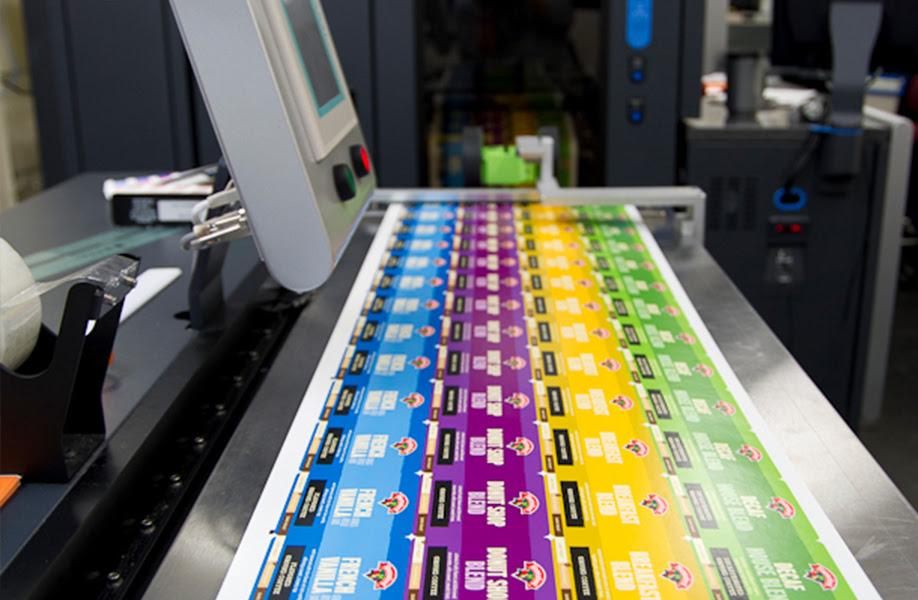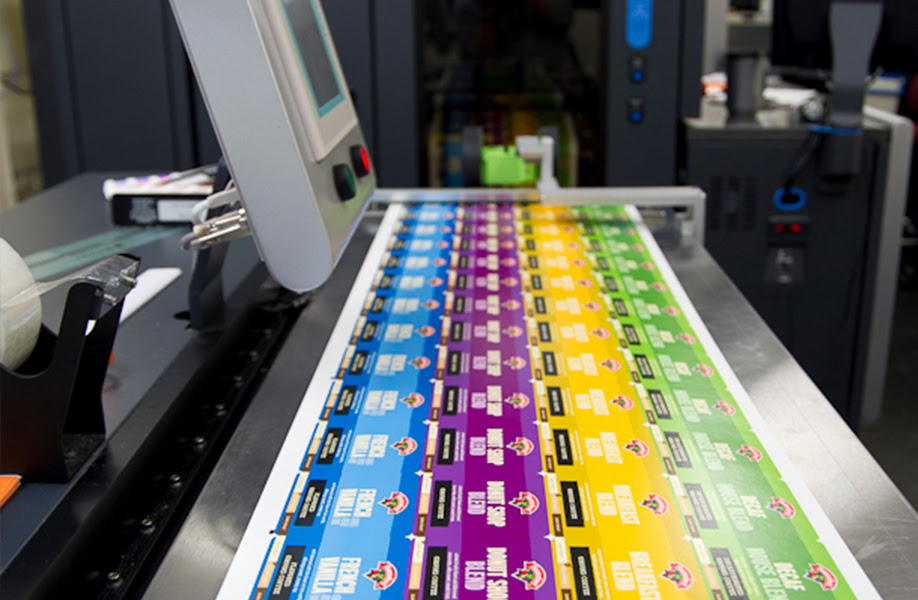There isn’t a clear-cut answer to this question. In fact, “versus” is the wrong word to use when comparing digital and flexographic label printing; neither technology is inherently better or worse than the other.
Which press technology makes the most sense for a particular job will depend on a host of brand-specific factors, including run size, promotional opportunities, lead time, design complexity and more.
And because there are so many factors to consider, there’s no quick rule of thumb you can reference: “If X, then digital is the best technology for your brand. But if Y, then flexo is the better choice.”
So, with no simple answer to this question, how do brands choose?
Well, it requires a conversation with a label converter. And not just any label converter — one that has experience printing millions of labels on both digital and flexo presses. Converters with the capability to print with either technology will give you an unbiased take on which is best suited for your brand’s unique needs.
And while there’s no substitute for a conversation with your converter, in this article, we’ll walk you through the basics of each technology, and certain scenarios in which each might be “better” for your brand.
Unpacking the “flexo vs. digital” debate
The traditional “flexo vs. digital printing” conversation relies on run size and cost as the deciding factors, and goes something like this:
Flexographic printing requires more setup time, and each change in graphics (e.g., flavor variations, varietals, etc.) requires new plates to be made. But because flexo presses have superior throughput speed, they’re well positioned to produce large orders cost-effectively. The longer the run, the faster the initial investment in setup and platemaking is neutralized.
Digital printing is a plate-free printing technology that requires virtually no setup time. The elimination of setup and plate costs makes digital printing competitive for small-to-midsize label orders — but its slower production speed makes flexo the better choice for longer runs.
For each brand’s labeling needs, there exists a value crossover point (pictured below). Flexo is the better choice for larger label orders, where the cost of plates and setup can be justified; digital is better for all runs under that threshold.
This argument is true — and it’s a great starting point for seeing how each technology provides greater value in different scenarios.
But it doesn’t tell the full story.
Run size and cost are far from the only factors you need to consider when choosing between the two technologies.
Let’s dive deeper.
When digital might make the most sense for your brand
 Because it doesn’t require plates, digital printing is hands-down the more cost-effective choice for short runs — but it certainly isn’t limited to small orders.
Because it doesn’t require plates, digital printing is hands-down the more cost-effective choice for short runs — but it certainly isn’t limited to small orders.
You’ll often find that brands use digital printing, even for larger orders, because it makes label-by-label variation possible and therefore presents a huge opportunity for brands of all sizes. The variable printing capabilities of digital presses allow you to change the information (e.g., different SKUs, geo-targeted personalization, serial numbers) on each label you print in a run.
Digital label printing might be the right choice if …
- Your label graphics are complex. Certain design elements, like accurate flesh tone reproduction, that require highly skilled press operators on flexo are a breeze on digital.
- You have many SKUs that use the same die cut. As long as they’re the same shape, you can combine multiple SKUs into one order. And because per-label costs decrease as order sizes increase, this allows you to save money and combat the costs associated with SKU proliferation.
- Your brand would like to personalize your labels for a particular promotion. Whether it’s Bud Light printing 200,000 unique can labels, or Coke printing different names on every label, many brands have tested the limits of variable printing with digital presses. How could your brand use personalization as part of an upcoming promotion?
- Your labels will be highly embellished. Digital labels are pulled off the press, and placed on a finishing press, which is a powerful piece of equipment where you can add embossed, foil stamps, spot varnishes and more. The digital finishing press, in some cases, can better deliver highly complex, embellished jobs.
When flexo might make the most sense for your brand

In recent years, digital printing has gotten a lot of attention as more and more brand owners adopt the technology. But flexographic printing is still a mainstay in label printing — and for good reason.
The argument for flexographic printing is straightforward.
The quality of flexo presses have been proven label after label, year after year. This is why flexo is thought of as the “backbone of the industry.”
And due to its throughput speeds and in-line finishing (screen, varnish, etc.), flexo allows for fast, continuous production and presents the best value for longer runs. In recent years, there have even been technological advancements that combine the benefits of flexo and digital printing.
Still, printing flexo graphically is a craft that requires a great deal of skill. On flexo, the operator is literally turning knobs, pulling levers, and making sure the web remains straight and doesn’t shift throughout the entire job. That’s why you’ll want to partner with a converter that has an experienced pre-press department, as well as a team of highly qualified press operators.
Flexographic label printing might be the right choice if …
- You require large runs with little variation. Because of its production speeds and in-line finishing, flexo printing presents the best value for exceptionally long runs. And, in the hands of our skilled and experienced operator, the end product is always of exceptional quality.
- You require a Pantone spot color. With 10 stations, we can incorporate several true spot colors into your print run. Still, if you don’t require a true Pantone color, digital printing’s extended gamut capabilities can match upwards of 90% of the spot color range.
If all you have is a hammer, everything looks like a nail
You’ve probably heard “digital vs. flexo” arguments that lean one direction or another. There’s often a simple explanation for this: The company making this argument only has digital (or flexographic) presses, not both.
But the fact remains that there isn’t a clear winner in the “flexo vs. digital” debate. There are scenarios in which digital makes more sense, and those in which flexo does.
What’s more, one brand may benefit by employing both printing technologies across their product portfolio: Digital for smaller runs with greater variety, or a seasonal promotion, and flexo for their flagship SKU.
That’s why it’s so important to partner with a label printer that has a large footprint of both flexo and digital presses. They’ll be incentivized to align the technology that will provide the best value for your brand’s unique needs, plain and simple.



